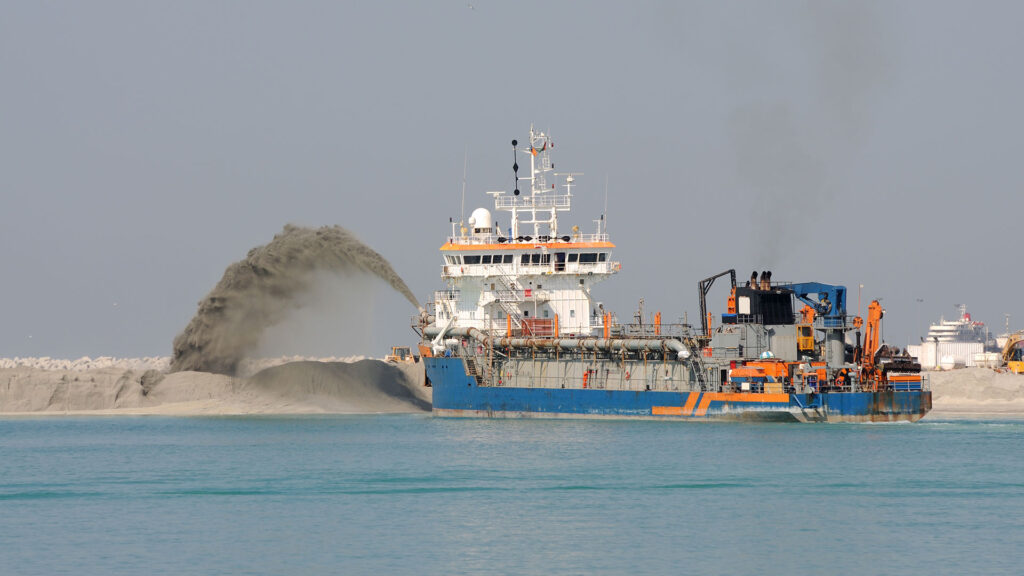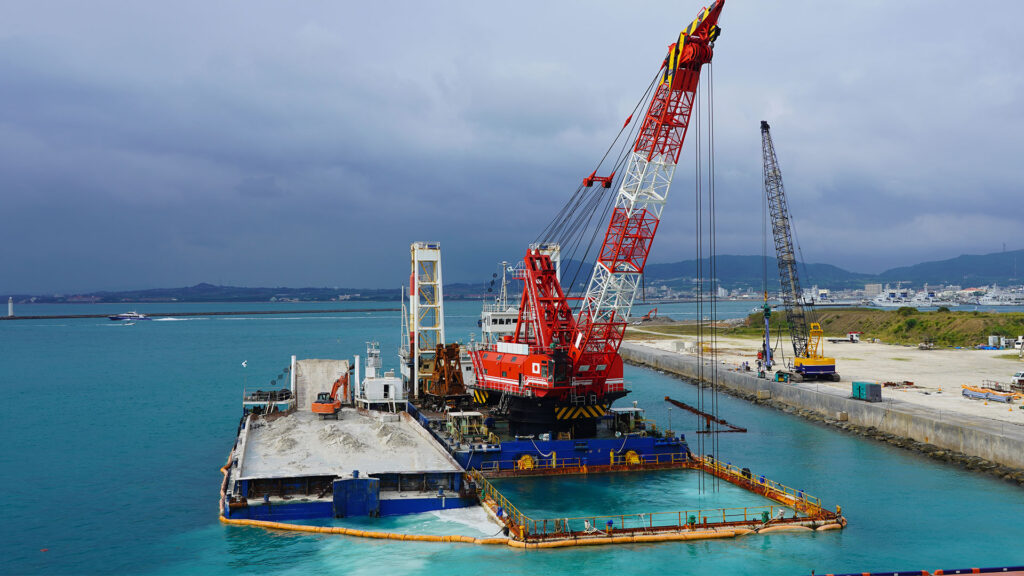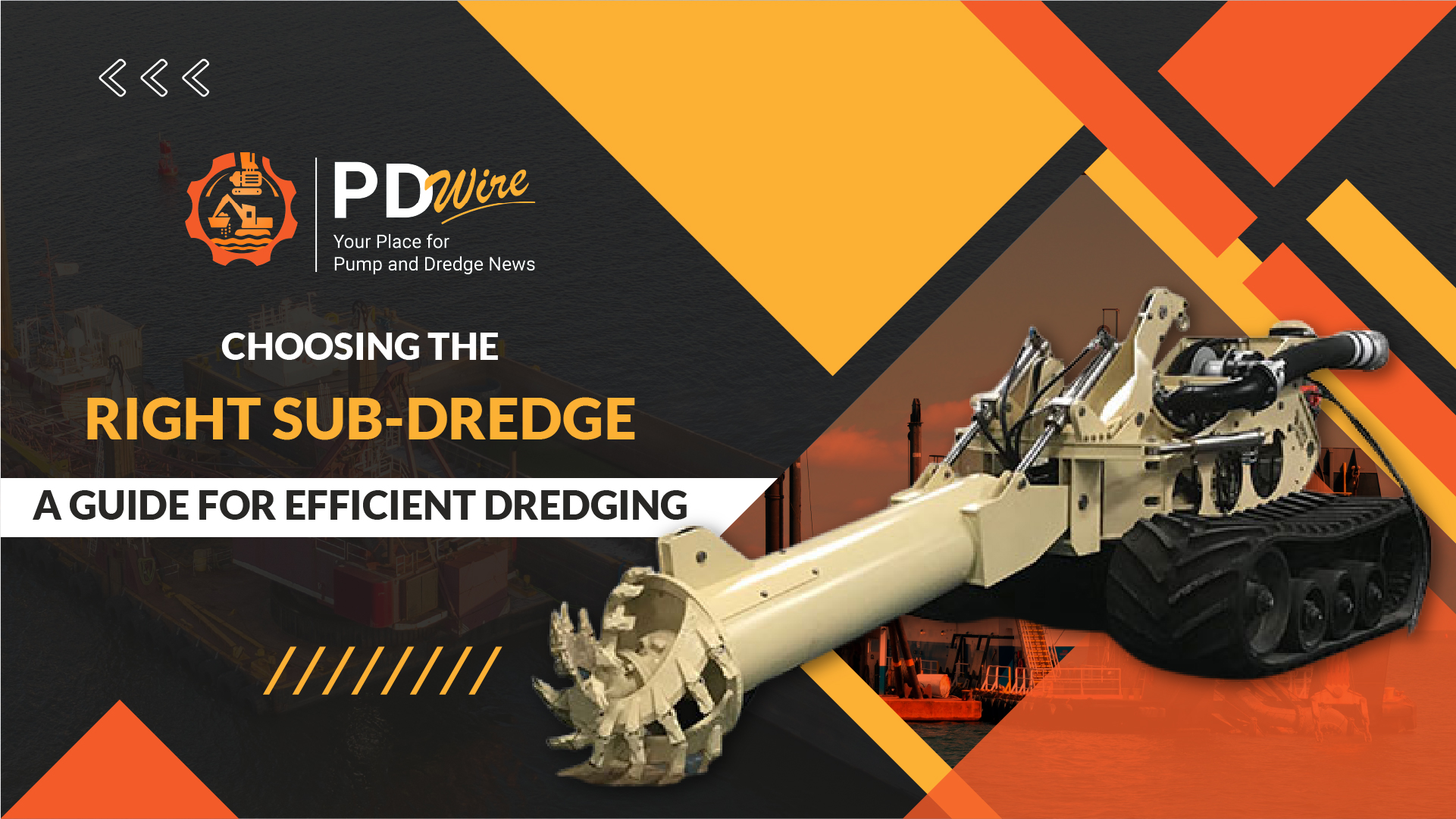A sub dredge plays a vital role in modern dredging operations, offering a powerful and flexible solution for removing underwater sediment, debris, and other materials. From clearing harbors to mining applications, the right submersible dredge can streamline excavating tasks, reduce costs, and minimize environmental impact. Selecting the appropriate subsea dredge requires a thorough assessment of project-specific needs and subsea dredge capabilities. This guide will cover essential considerations for choosing the best submersible dredge, from project requirements to operational efficiency, ensuring optimal performance for any excavating project.
Understanding the Basics of Sub-Dredges

A sub dredge is a type of remote-operated excavating equipment that works underwater, minimizing the need for extensive infrastructure on the surface. Submersible dredges are particularly useful in conditions where traditional sediment removal equipment might struggle, such as in deep water, narrow spaces, or sensitive environmental areas.
The key features of a sub dredge include robust suction capabilities, compact designs, and the flexibility to function effectively across a variety of sediment removal applications. Equipped with pumps and hoses, submersible dredges efficiently move sediment and other materials to designated locations for disposal or processing. These characteristics make subsea dredges ideal for projects such as marina sediment removal, maintenance of waterways, mining, and environmental sediment removal for habitat restoration.
Assessing Project Requirements
Choosing the right submersible dredge starts with a clear understanding of the sediment removal project’s specific needs. Important factors include the excavating depth, material type, and volume. For instance, a diamond dredge used in mining may need particular power and suction capabilities to handle the heavy, dense material efficiently.
Additional factors to consider are underwater visibility, environmental sensitivity, and the distance to the pump discharge point, as these can impact the type of submersible dredge required. Sensitive areas, for instance, may benefit from submersible dredges designed to minimize disturbance while ensuring precision. Aligning your project’s scope with the subsea dredge capabilities will maximize operational efficiency, reduce downtime, and provide a safe and effective Clearing waterways process.
Key Factors in Choosing the Right Sub-Dredge

Power and Suction Capabilities
Suction power is crucial for a subsea dredge, as it dictates the ability to remove materials swiftly and efficiently. Projects dealing with heavy or dense materials—like in diamond dredge applications—will require higher suction power. Sub dredges are available in a range of power configurations, from low-power units for light sediment removal to high-powered models designed for intensive industrial use.
Durability and Material Compatibility
For projects in harsh or abrasive environments, submersible dredges must be constructed from durable materials, like stainless steel or hardened alloys, to withstand wear and corrosion. Compatibility with specific clearing waterways materials, such as sand, clay, or gravel, is also essential, as different materials may require specialized pump components to avoid damage and ensure efficiency.
Mobility and Ease of Deployment
A major advantage of submersible dredges is their mobility. Remote-operated submersible dredges enable deployment and control from a distance, ideal for projects in hazardous or hard-to-reach areas. Furthermore, submersible dredges are generally compact, which makes them easier to transport and set up than larger conventional dredging systems, enhancing their versatility.
Sub-Dredge Models: Which One Fits Your Needs?
Sub dredge models vary widely to suit different project requirements, and choosing the right model is essential. Lightweight submersible dredges are suitable for smaller jobs or delicate environments where disruption must be minimized. Medium-duty models offer a balance of power and portability, while heavy-duty submersible dredges are tailored for large-scale industrial applications requiring maximum power and durability.
For instance, if your project involves a diamond dredge in deep water, a heavy-duty model with powerful suction might be required. Selecting a model tailored to your specific silt removal environment is key to achieving the best results.
Evaluating Operational Efficiency
Operational efficiency significantly impacts productivity and cost savings. To assess the efficiency of a submersible dredge, look for features like automated controls that streamline the silt removal process, as well as energy-efficient pumps that conserve power without sacrificing performance. High-efficiency sub dredge also reduces silt removal costs and project timelines, as they complete tasks faster with fewer resources, optimizing your overall investment.
Maintenance Considerations
Routine maintenance is essential to prolong a sub dredge life and keep it performing optimally. Key maintenance tasks include servicing pumps, inspecting seals for leaks, and checking hoses for wear. Selecting a sub dredge model with easy-access maintenance features can simplify these tasks, minimizing downtime and ensuring that the equipment operates continuously throughout critical periods of excavation.
Models that are maintenance-friendly are particularly valuable in challenging environments, where access for repairs might be difficult. Such features can ultimately reduce operational costs and enhance the longevity of the equipment.
Budget and ROI: Balancing Cost with Performance
When selecting a sub dredge, considering the cost-benefit ratio is vital. While high-end models may have a larger upfront cost, they often deliver better performance, efficiency, and durability, leading to a higher return on investment (ROI). To evaluate ROI, consider factors like the model’s lifespan, maintenance costs, and how well it meets your excavating project’s requirements.
Financing and leasing options are available for many sub dredge models, which can ease the financial burden of acquiring advanced excavating technology. By balancing cost with performance, you can select a sub dredge that optimally meets your project goals.
Conclusion
Choosing the right sub dredge is crucial for any successful excavating project. By understanding sub dredge basics, evaluating project-specific requirements, and weighing factors like power, durability, and operational efficiency, you can select a sub dredge that meets both your technical and budgetary needs. From small-scale sediment removal to industrial diamond dredging, assessing these factors ensures optimal performance and cost-effectiveness.
Discover Your Ideal Sub-Dredge Solution for Maximum Efficiency, and make every dredging operation smoother, faster, and more efficient.
